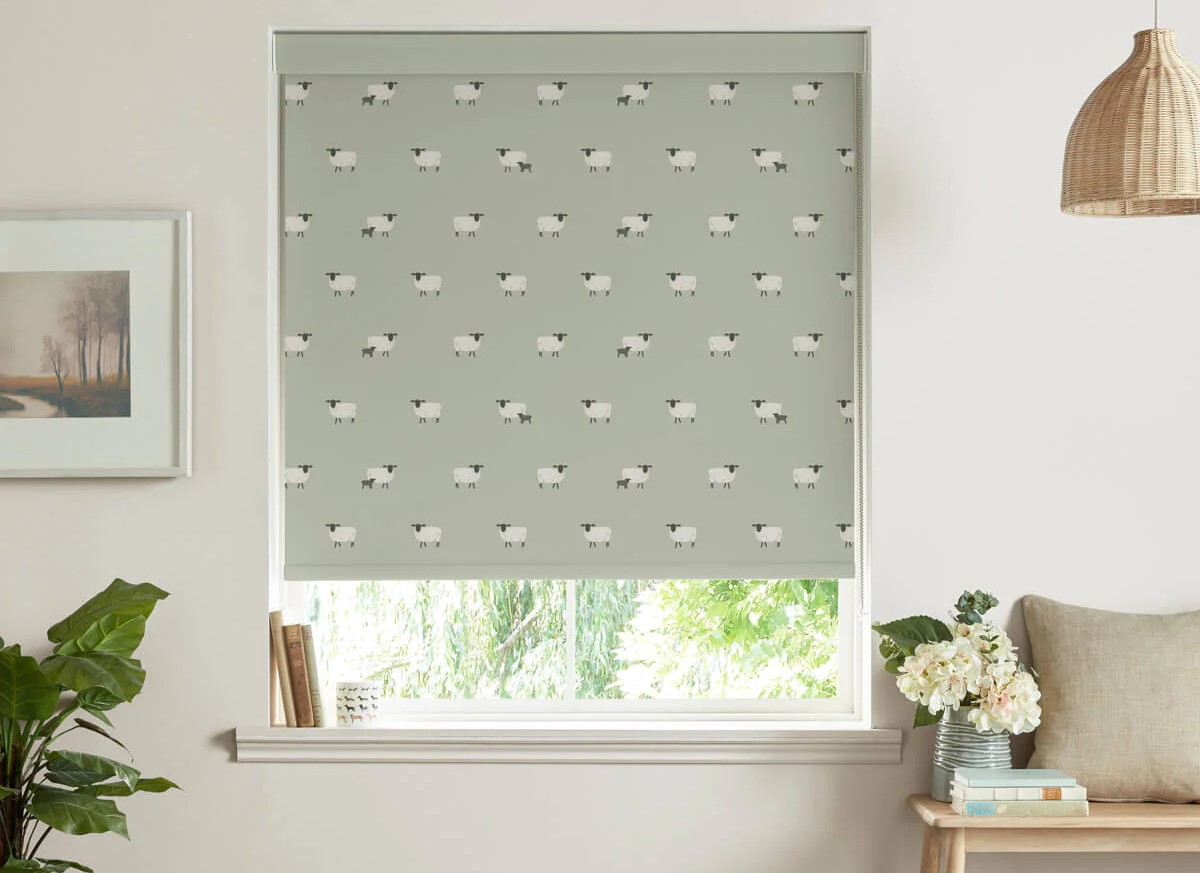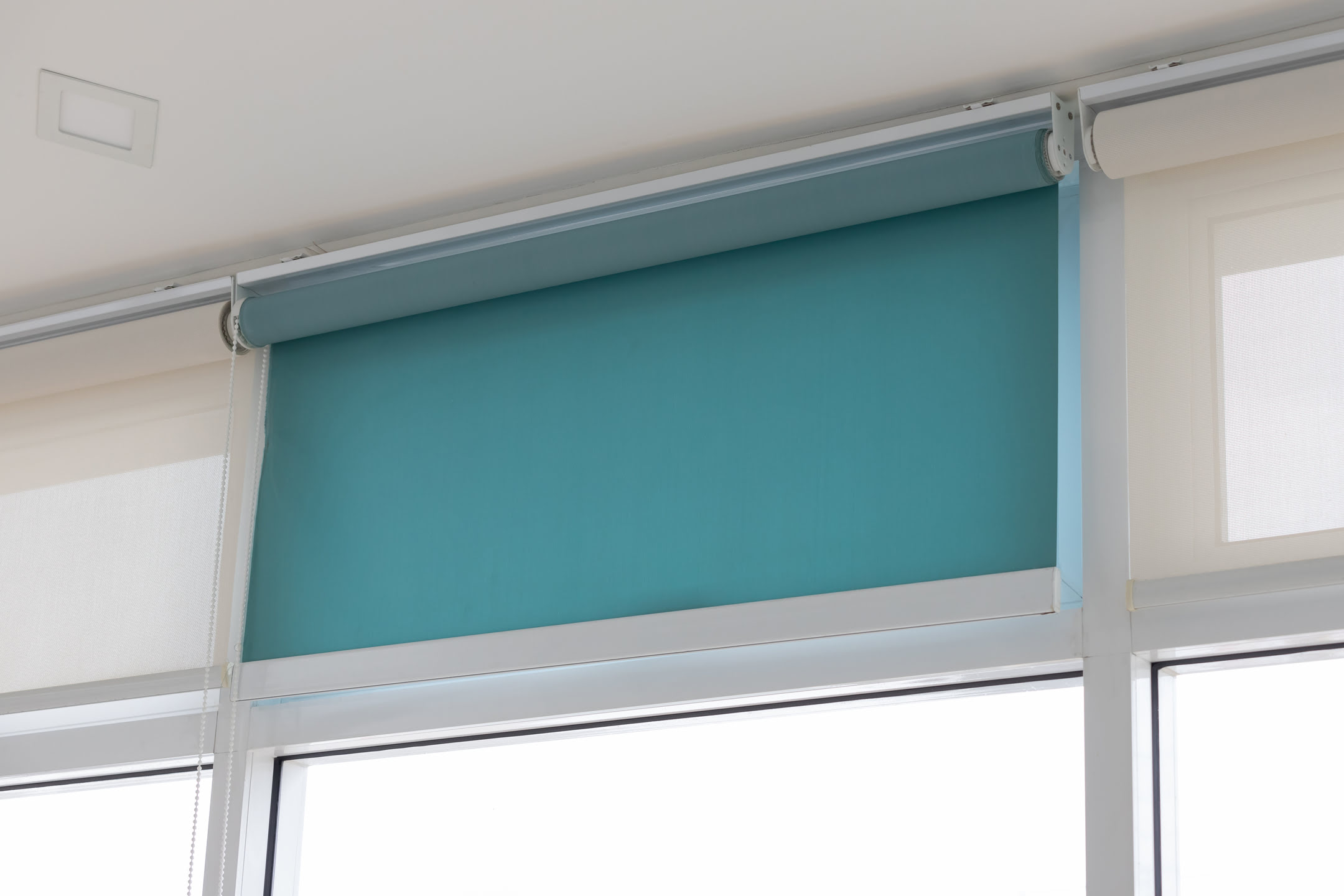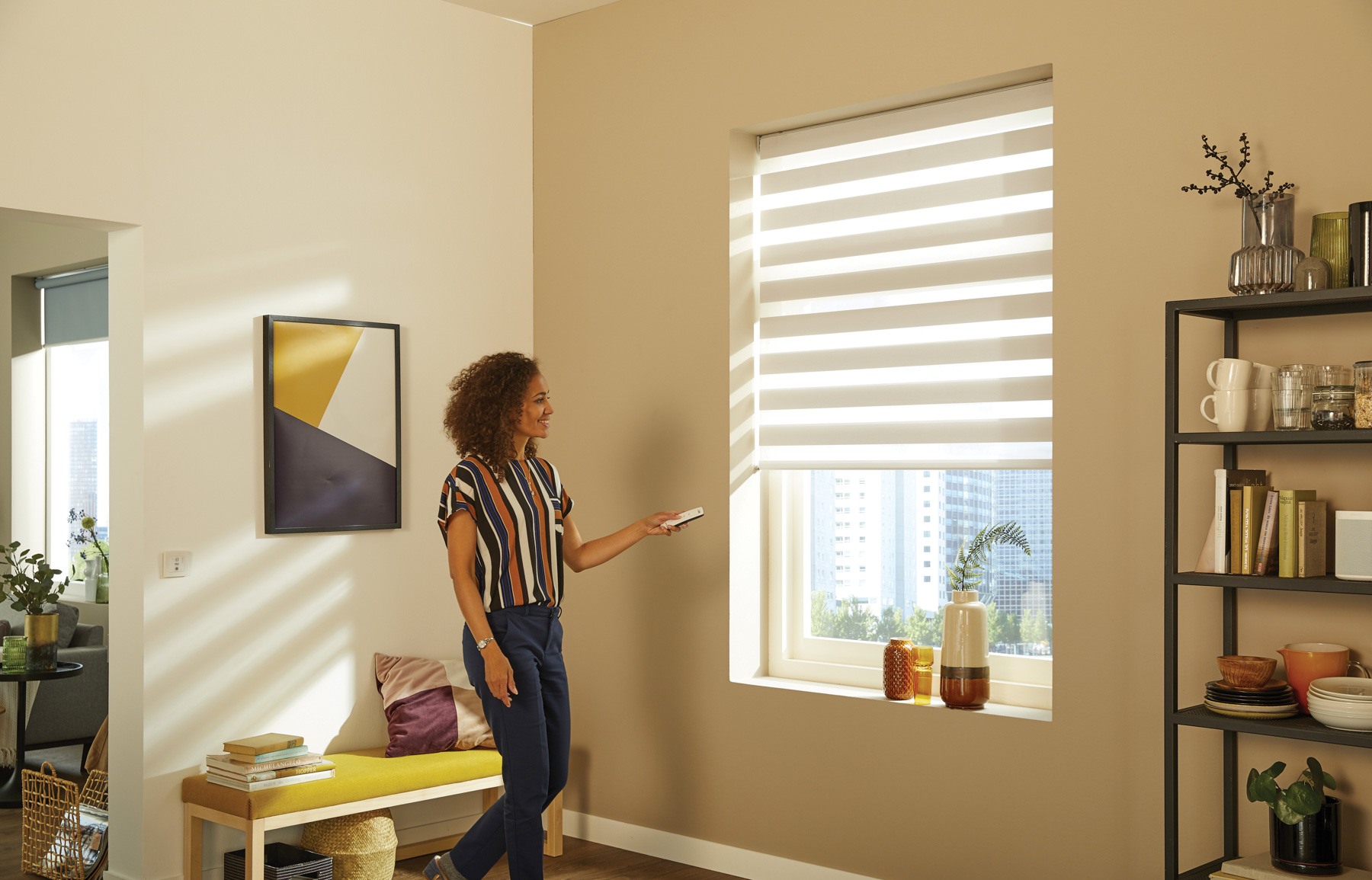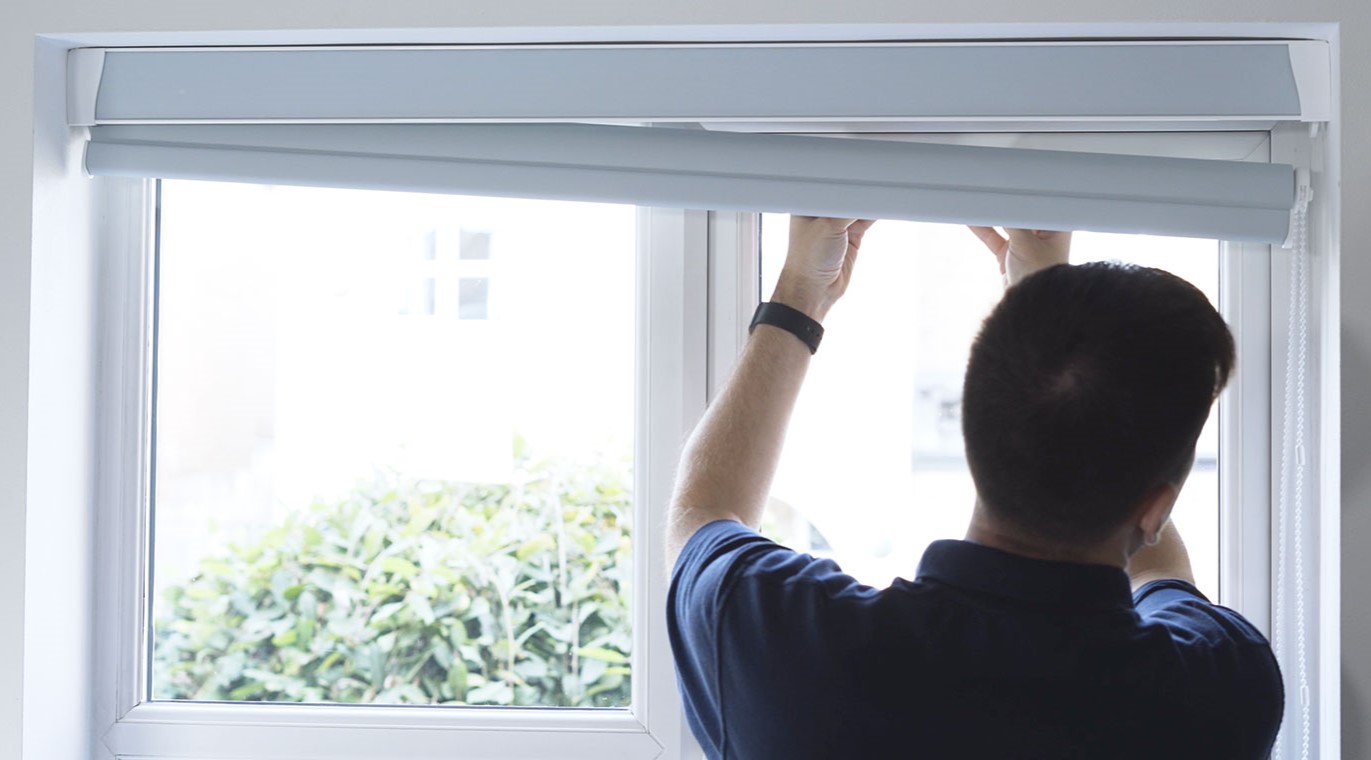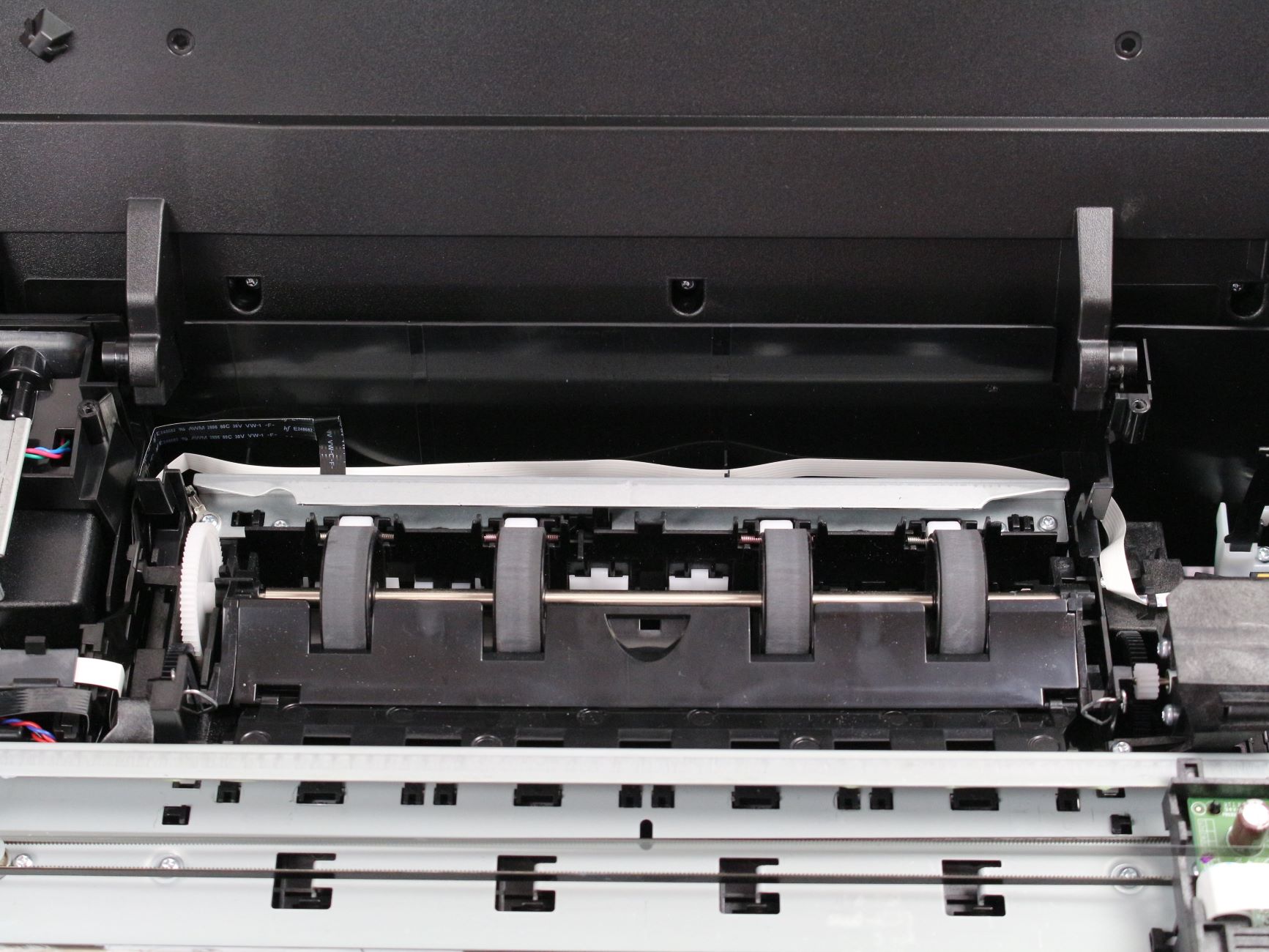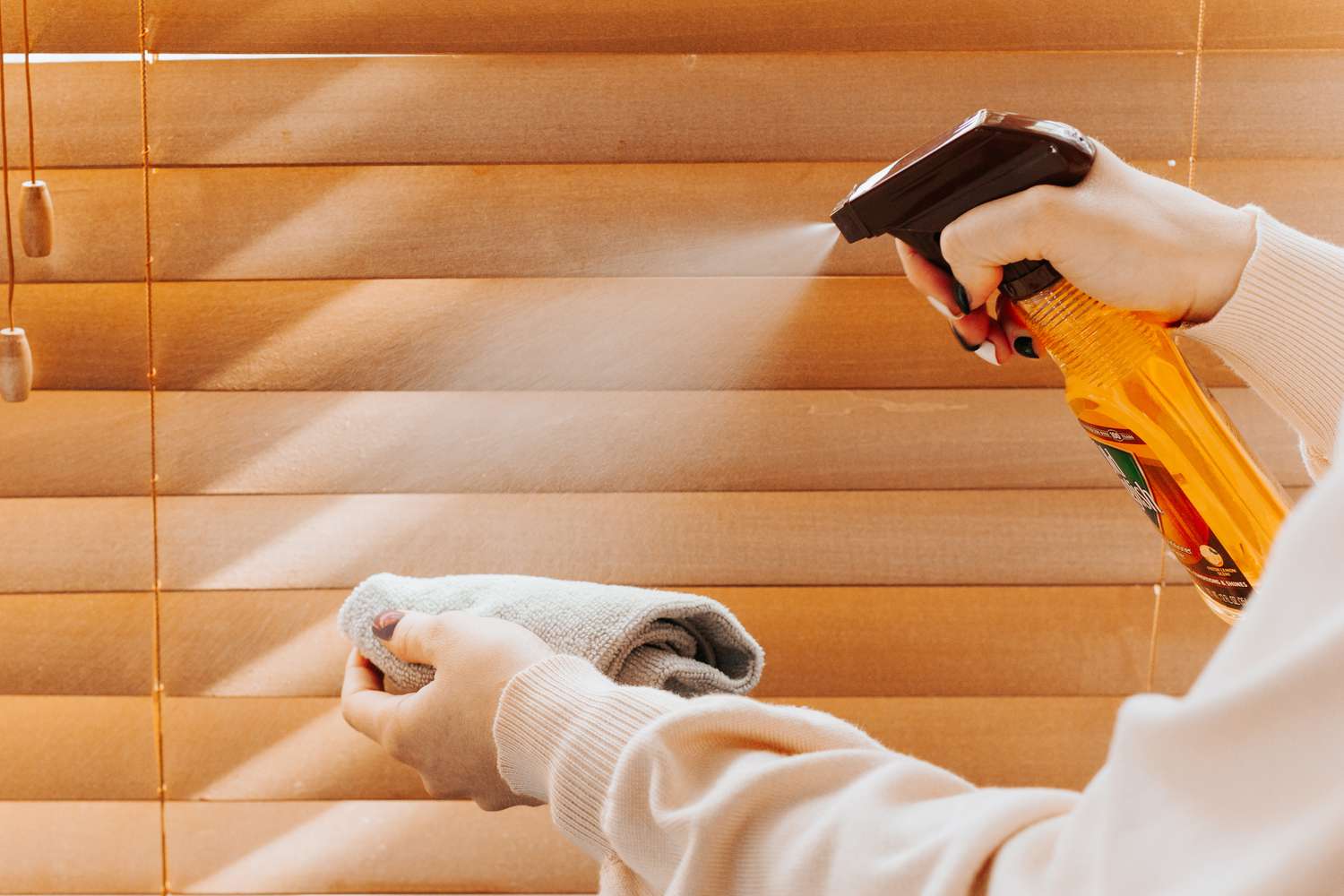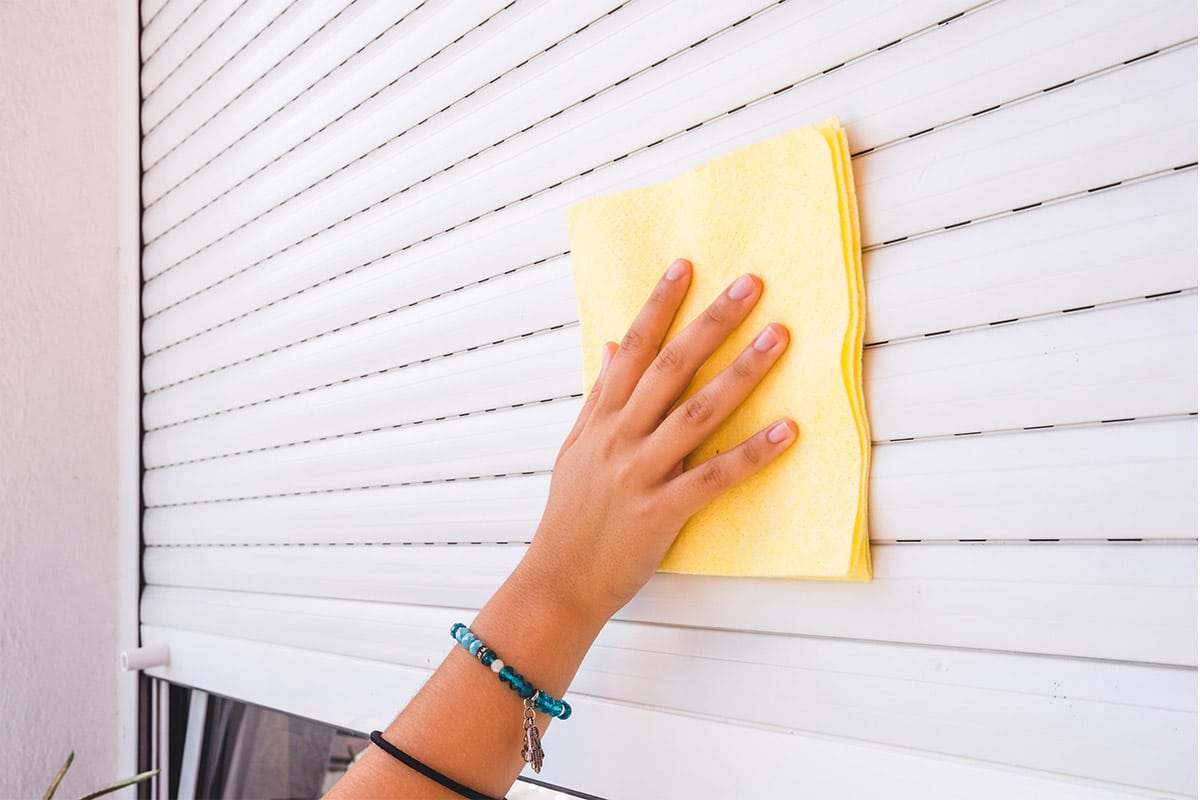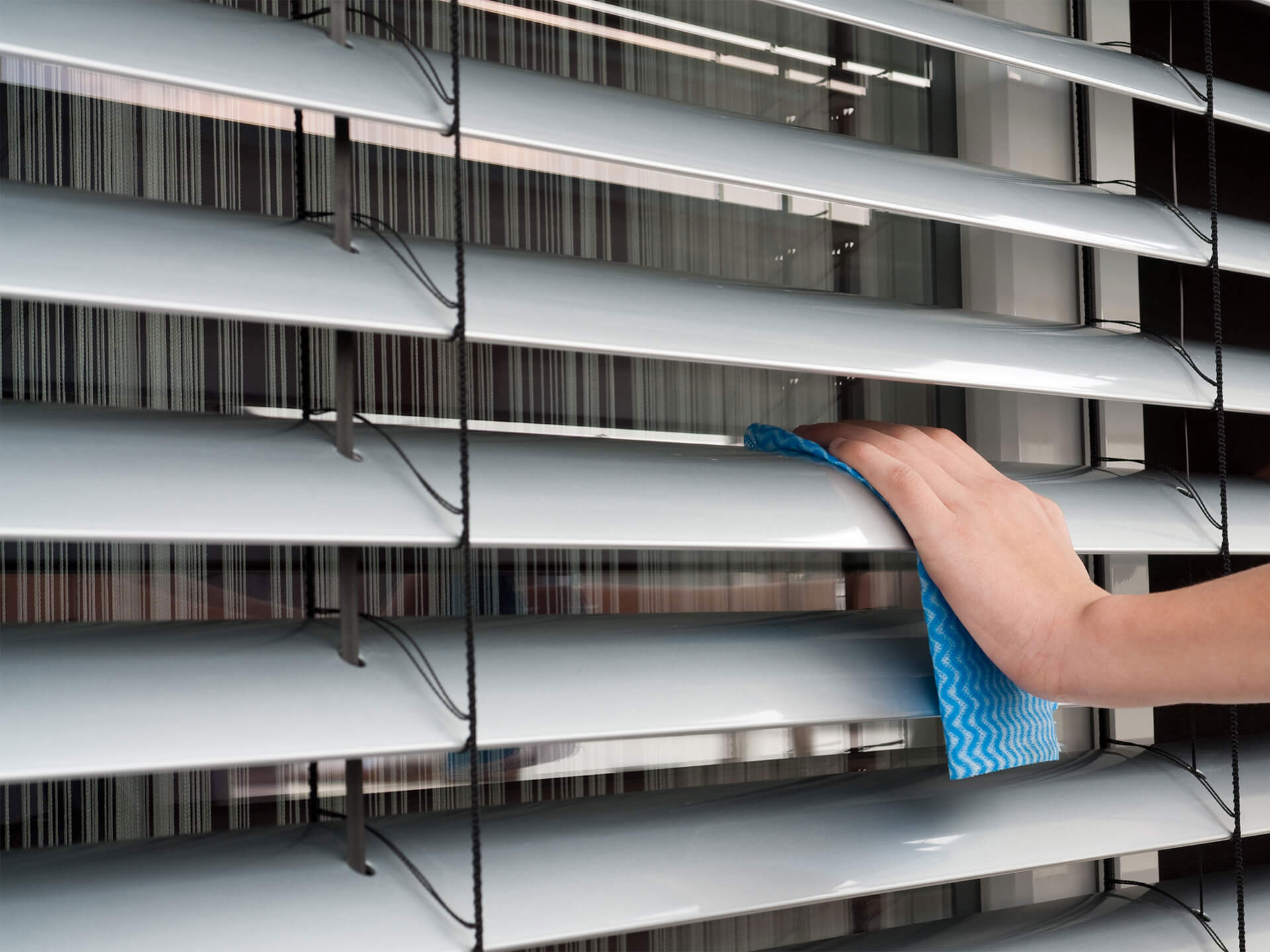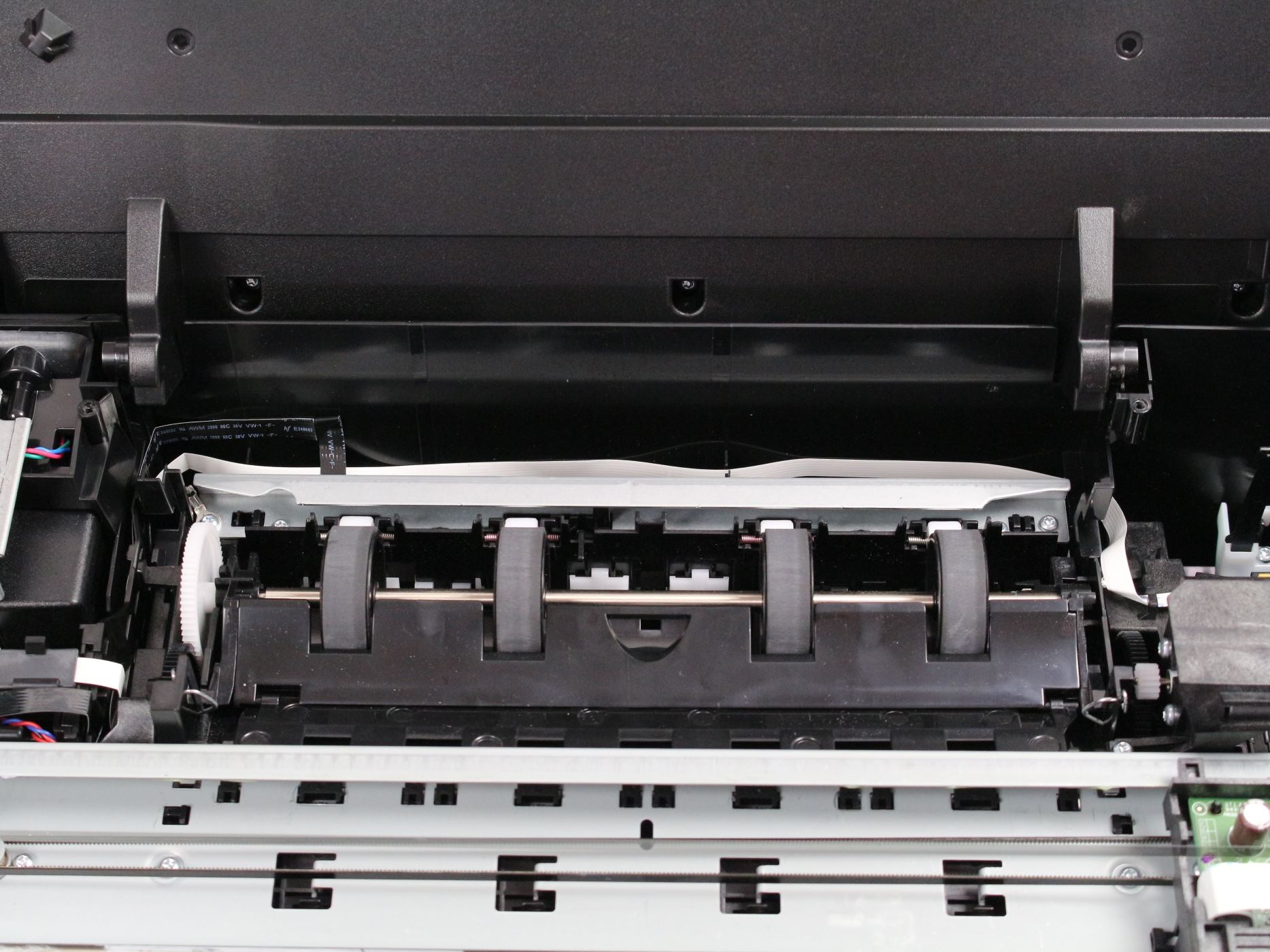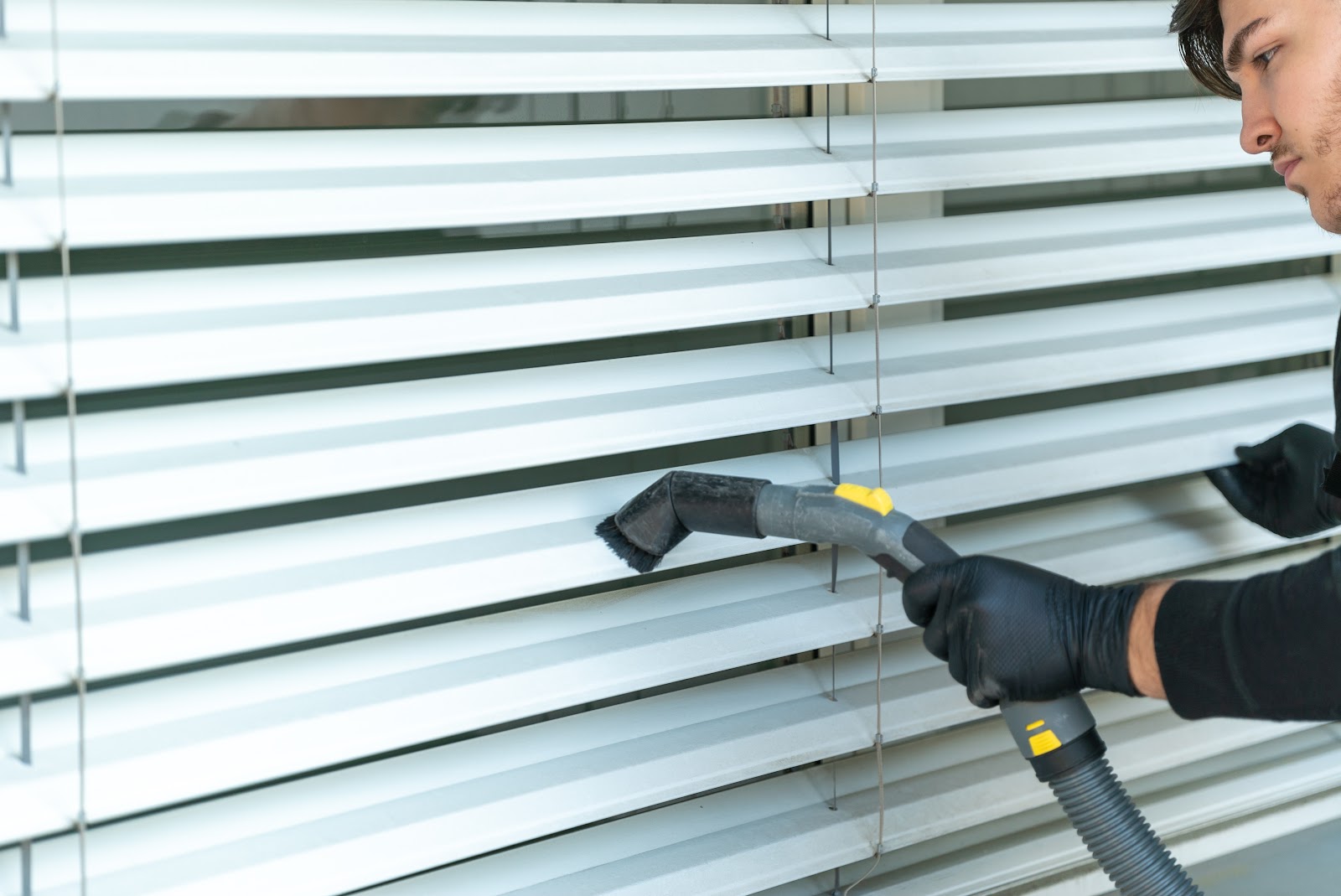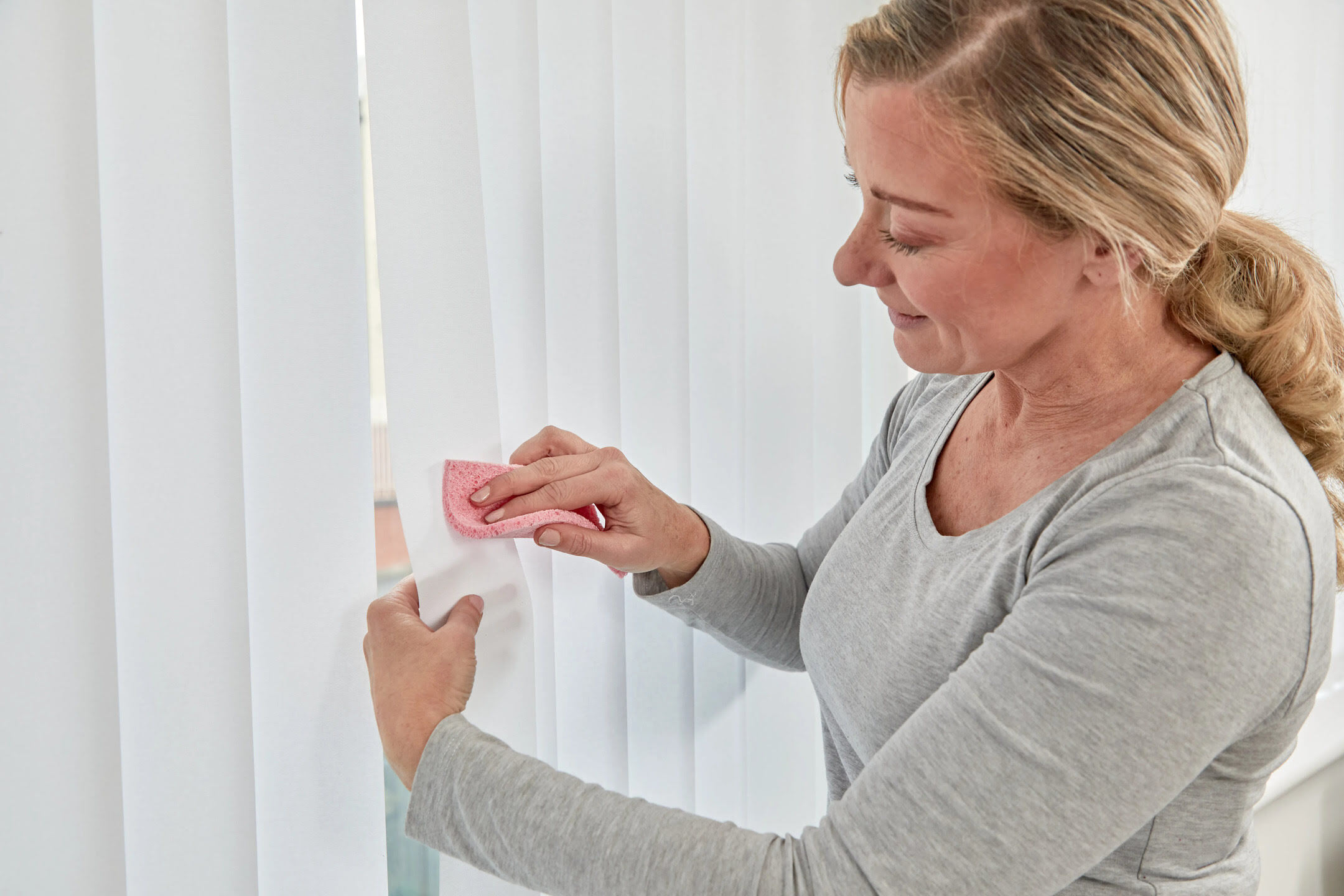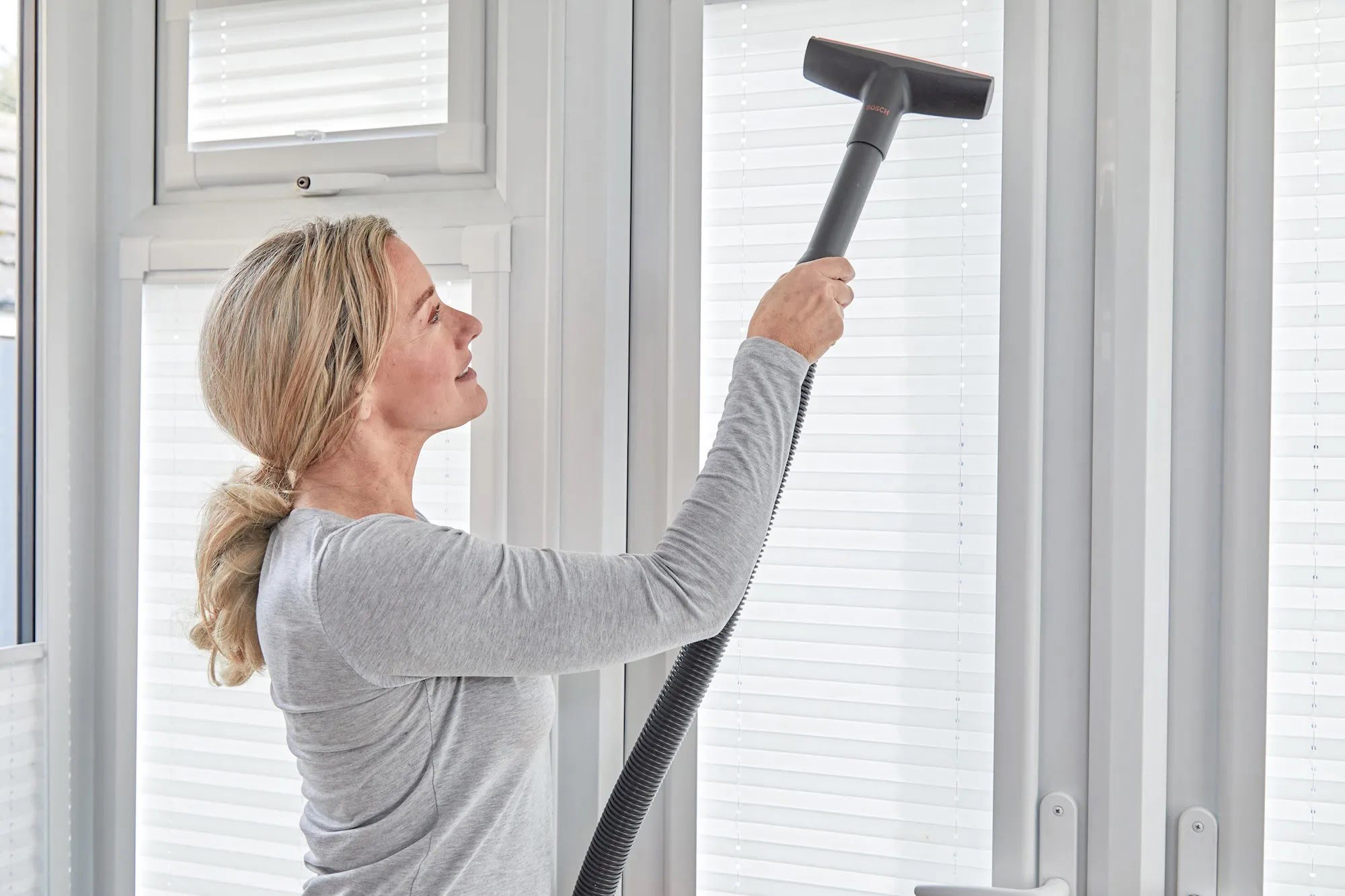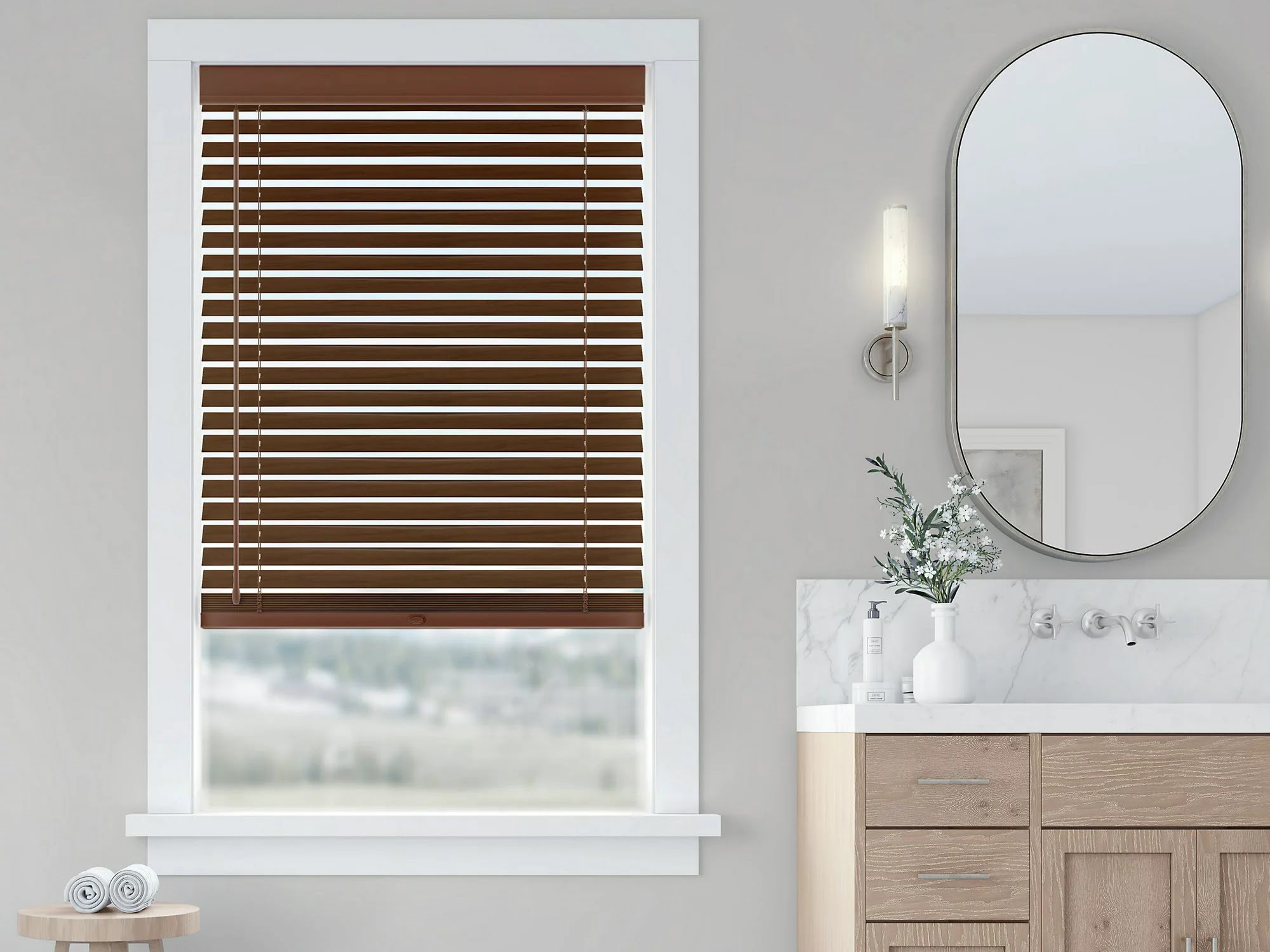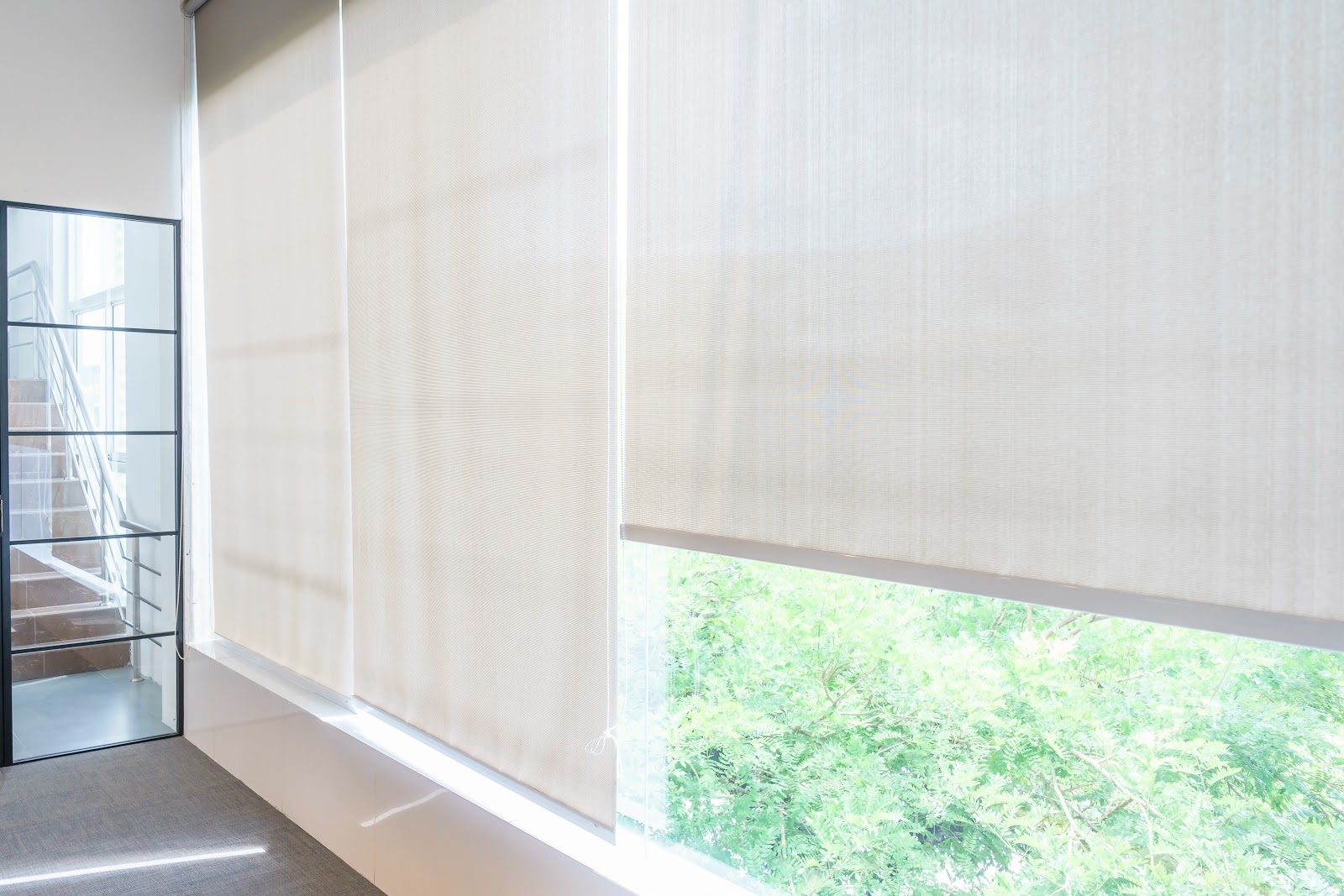

Articles
How To Clean Roller Blinds Stains
Modified: December 7, 2023
Learn effective ways to clean roller blinds stains with these informative articles. Find expert tips and tricks to keep your blinds looking fresh and new.
(Many of the links in this article redirect to a specific reviewed product. Your purchase of these products through affiliate links helps to generate commission for Storables.com, at no extra cost. Learn more)
Introduction
Roller blinds are an excellent addition to any home, providing privacy, light control, and a touch of style to your windows. However, over time, roller blinds can become stained and dirty, diminishing their appearance and functionality. Whether it’s food stains, dust, or fingerprints, addressing these stains promptly and effectively is crucial to maintaining the beauty and longevity of your roller blinds.
In this article, we will guide you through the process of cleaning roller blinds stains and restoring them to their pristine condition. We will provide step-by-step instructions, as well as tips and tricks to help you deal with different types of stains. With a little effort and the right tools, you can transform your stained roller blinds into a visually appealing window treatment once again.
Before we dive into the cleaning process, let’s gather the materials you’ll need to effectively clean your roller blinds:
- Mild detergent or dish soap
- Warm water
- Microfiber cloth or soft sponge
- Vacuum cleaner with brush attachment
- Vinegar (optional)
- Plastic sheet or tarp (optional)
Now that you have all the necessary materials, let’s move on to preparing your roller blinds for cleaning.
Key Takeaways:
- Regular dusting and prompt spot cleaning are essential to prevent and remove roller blind stains, maintaining their beauty and functionality for years to come.
- Deep cleaning methods, such as using vinegar solutions or baking soda pastes, can effectively tackle stubborn roller blind stains, restoring them to their pristine condition.
Read more: How To Clean Zebra Roller Blinds
Materials Needed
Before you begin cleaning your roller blinds, it’s important to gather all the necessary materials. Here’s a list of items you’ll need:
- Mild detergent or dish soap: Choose a gentle, non-abrasive detergent or dish soap to clean your roller blinds. Avoid using harsh chemicals that can damage the fabric or the mechanisms of the blinds.
- Warm water: You’ll need warm water to create a cleaning solution and rinse your roller blinds.
- Microfiber cloth or soft sponge: These soft, lint-free materials are ideal for gently wiping and removing stains from roller blinds without scratching the fabric.
- Vacuum cleaner with brush attachment: A vacuum cleaner with a brush attachment can be used to remove any dust or debris from your roller blinds before cleaning them.
- Vinegar (optional): Vinegar can be used as an alternative cleaning agent for tougher stains. It has natural disinfectant properties and can help remove grease and grime from the blinds.
- Plastic sheet or tarp (optional): If you’re cleaning your blinds indoors, it’s a good idea to lay down a plastic sheet or tarp to protect your floors or furniture from any drips or spills.
Having these materials ready will ensure that you have everything you need to effectively clean your roller blinds and achieve the best results. Now that you’re equipped with the necessary tools, let’s move on to preparing your roller blinds for cleaning.
Preparing to Clean Roller Blinds
Before diving into the process of cleaning your roller blinds, it’s essential to take a few steps to prepare them for the cleaning process. Taking these preliminary measures will help ensure that you clean your roller blinds effectively and without causing any damage. Here’s what you need to do:
- Close the blinds: Start by closing the roller blinds completely. This will expose both sides of the blinds and make it easier to clean them thoroughly.
- Remove any dust or debris: Use a vacuum cleaner with a brush attachment to gently remove any dust, pet hair, or debris from the blinds. Move the brush attachment along the surface of the blinds, paying special attention to the bottom edge where dust tends to accumulate.
- Test for colorfastness: Before applying any cleaning solution to your roller blinds, it’s important to check for colorfastness. Apply a small amount of the cleaning solution to an inconspicuous area of the blinds and wait for a few minutes. If the color does not fade or bleed, it’s safe to proceed with cleaning.
- Protect surrounding areas: If you’re cleaning your roller blinds indoors, it’s a good idea to protect the surrounding areas. Lay down a plastic sheet or tarp on the floor or furniture to prevent any drips or spills from causing damage.
By following these steps, you’ll ensure that your roller blinds are properly prepared for the cleaning process. Now that you’re ready, it’s time to tackle those stubborn stains and restore your blinds to their former glory.
Spot Cleaning Roller Blinds Stains
If you notice small stains or spills on your roller blinds, spot cleaning is an effective way to target and remove them without cleaning the entire blind. Follow these steps to spot clean roller blind stains:
- Create a cleaning solution: In a bucket or bowl, mix a small amount of mild detergent or dish soap with warm water. Alternatively, you can use a solution of equal parts water and vinegar for tougher stains.
- Dampen a microfiber cloth or soft sponge: Dip a microfiber cloth or sponge into the cleaning solution and wring out any excess liquid. The cloth or sponge should be only slightly damp, not overly wet.
- Gently wipe the stained area: Carefully and gently wipe the stained area of the roller blind with the damp cloth or sponge. Use light pressure and circular motions to lift the stain from the fabric. Avoid rubbing too forcefully, as this may damage the blind.
- Rinse the cloth or sponge: Periodically rinse the cloth or sponge in clean water to remove any collected dirt or stain residue. This will prevent spreading the stain further on the blind.
- Blot dry: After spot cleaning, use a dry microfiber cloth or towel to lightly blot the damp area of the roller blind. This will help remove any excess moisture and prevent water spots from forming.
- Allow the blinds to dry: Leave the roller blinds open or extended to air dry completely. Make sure to avoid closing the blinds until they are thoroughly dry to prevent any moisture from causing mold or mildew.
Spot cleaning is a quick and effective approach to tackle small stains on roller blinds. However, for more significant or stubborn stains, you may need to consider deep cleaning methods, which we will discuss next.
To clean roller blind stains, mix warm water with mild detergent and gently scrub the stains with a soft cloth or sponge. Avoid using harsh chemicals that could damage the fabric.
Deep Cleaning Roller Blinds Stains
Deep cleaning your roller blinds is necessary when spot cleaning is not enough to remove stubborn stains or when the blinds require a thorough cleaning. To deep clean roller blinds, follow these steps:
- Remove the roller blinds: Start by removing the roller blinds from the window. Depending on the type of roller blinds you have, this may involve unclipping them from brackets or removing them from their roller mechanism. Refer to the manufacturer’s instructions for guidance.
- Prepare the cleaning solution: In a bucket or basin, mix a mild detergent or dish soap with warm water to create a soapy solution. You can also add a small amount of vinegar for extra cleaning power, especially if dealing with grease or tough stains.
- Immerse the blinds: Submerge the roller blinds in the cleaning solution, making sure the entire blind is covered. Gently agitate the blinds to loosen any dirt or stains from the fabric. Allow them to soak for 15-20 minutes to help break down stubborn grime.
- Scrub and rinse: Carefully scrub the blinds using a soft brush or sponge. Pay close attention to any visible stains or areas with heavy dirt buildup. Rinse the blinds thoroughly with clean water to remove any soapy residue.
- Dry the blinds: After rinsing, hang the roller blinds in a well-ventilated area to air dry completely. You can use a clothesline or lay them flat on a clean surface. Avoid direct sunlight, as it can cause the fabric to fade or warp.
- Reinstall the roller blinds: Once the blinds are fully dry, reinstall them back into the window brackets or roller mechanism. Follow the manufacturer’s instructions for proper installation.
Deep cleaning your roller blinds on a regular basis will help keep them looking fresh and extend their lifespan. However, for particularly stubborn or set-in stains, you may need to employ additional methods, which we will explore in the next section.
Read more: What Are Roller Blinds
Removing Stubborn Stains from Roller Blinds
Stubborn stains on roller blinds can be quite challenging to remove. However, with the right techniques and a little bit of patience, you can tackle even the toughest stains. Here are some methods you can try:
- Vinegar Solution: Vinegar is a powerful natural cleaning agent that can help break down and remove stubborn stains, especially grease or oil-based ones. Mix equal parts vinegar and water in a spray bottle and spray the stained area. Let it sit for a few minutes, then use a soft brush or cloth to gently scrub the stain. Rinse thoroughly with clean water and allow the blind to air dry.
- Baking Soda Paste: Create a paste by mixing baking soda with a small amount of water. Apply the paste to the stained area and gently rub it in using a soft cloth or sponge. Let it sit for about 15 minutes, then rinse with water and dry the blind.
- Hydrogen Peroxide: Hydrogen peroxide can be effective in removing tough stains like ink or wine. Apply a small amount of hydrogen peroxide directly to the stain and let it sit for a few minutes. Blot the stain with a clean cloth until it begins to fade, then rinse with water and dry the blind.
- Commercial Stain Remover: If the above methods don’t work, you can try using a commercial stain remover specifically designed for fabric. Follow the instructions on the product carefully, ensuring it is safe to use on your roller blinds. Apply the remover to the stain, let it sit for the recommended time, then rinse and dry the blind.
When using any cleaning solution or method, always test it on a small, inconspicuous area of the roller blind first to ensure it doesn’t cause any damage or color fading. Additionally, be gentle when scrubbing the stain to avoid damaging the fabric or other components of the blinds.
By trying these methods and being persistent, you can say goodbye to stubborn stains and restore the beauty of your roller blinds.
Preventing Stains on Roller Blinds
Preventing stains on your roller blinds is key to maintaining their appearance and prolonging their lifespan. Here are some preventive measures you can take to minimize the chances of stains:
- Regular dusting: Dust accumulation can lead to stains and discoloration over time. To prevent this, make sure to dust your roller blinds regularly. Use a soft brush attachment on your vacuum cleaner or a microfiber cloth to gently remove dust from the blinds.
- Keep blinds closed when cooking: If your roller blinds are in the kitchen, keeping them closed while cooking can prevent grease and food stains from settling on the fabric.
- Avoid touching blinds with dirty hands: Do your best to avoid touching roller blinds with dirty or greasy hands. Oils and dirt from your hands can easily transfer onto the blinds, causing stains that are challenging to remove.
- Protect blinds from direct sunlight: Prolonged exposure to direct sunlight can cause fading and discoloration of roller blinds. Consider using curtains or window films to filter the sunlight and protect your blinds from UV damage.
- Treat spills and stains promptly: When accidents happen, it’s crucial to address spills and stains promptly. Blot the stain with a clean cloth or paper towel to absorb as much of the liquid as possible, then use the appropriate cleaning method to remove the stain.
- Avoid using harsh chemicals: Harsh chemicals can damage the fabric and mechanisms of roller blinds. Stick to mild detergents or dish soaps when cleaning, and always check the manufacturer’s instructions for any recommended cleaning products.
- Take caution with pets: If you have pets, be mindful of their contact with the roller blinds. Pet hair and saliva can leave stains and become difficult to remove. Regularly groom your pets and keep them away from the blinds if possible.
By adopting these preventive measures, you can significantly reduce the risk of stains on your roller blinds and maintain their pristine condition for years to come.
Conclusion
Roller blinds are not only functional but also add style and elegance to your windows. However, over time, stains can accumulate and diminish their beauty. By following the steps outlined in this article, you can effectively clean roller blind stains and restore them to their original glory.
Whether you are spot cleaning small stains or deep cleaning to tackle more stubborn ones, the key is to use the right materials and techniques. Mild detergents or dish soaps, warm water, microfiber cloths or sponges, and a vacuum cleaner with a brush attachment are essential tools to have on hand.
Prevention is always better than cure, so taking preventive measures can help avoid stains in the first place. Regular dusting, keeping blinds closed during cooking, and being mindful of touching the blinds with dirty hands are simple yet effective ways to keep your roller blinds stain-free.
Remember, different stains may require different approaches, such as vinegar solutions, baking soda pastes, hydrogen peroxide, or commercial stain removers. It’s essential to test these solutions on a small, inconspicuous area of the blind before applying them to the entire surface.
By following these guidelines and incorporating proper cleaning and maintenance practices, you can enjoy beautiful, stain-free roller blinds for years to come. The investment of time and effort into cleaning and prevention will be well worth it when your roller blinds continue to enhance the aesthetics of your home.
So, keep these tips in mind, be proactive in maintaining your roller blinds, and enjoy the benefits of a clean and visually appealing window treatment.
Frequently Asked Questions about How To Clean Roller Blinds Stains
Was this page helpful?
At Storables.com, we guarantee accurate and reliable information. Our content, validated by Expert Board Contributors, is crafted following stringent Editorial Policies. We're committed to providing you with well-researched, expert-backed insights for all your informational needs.
